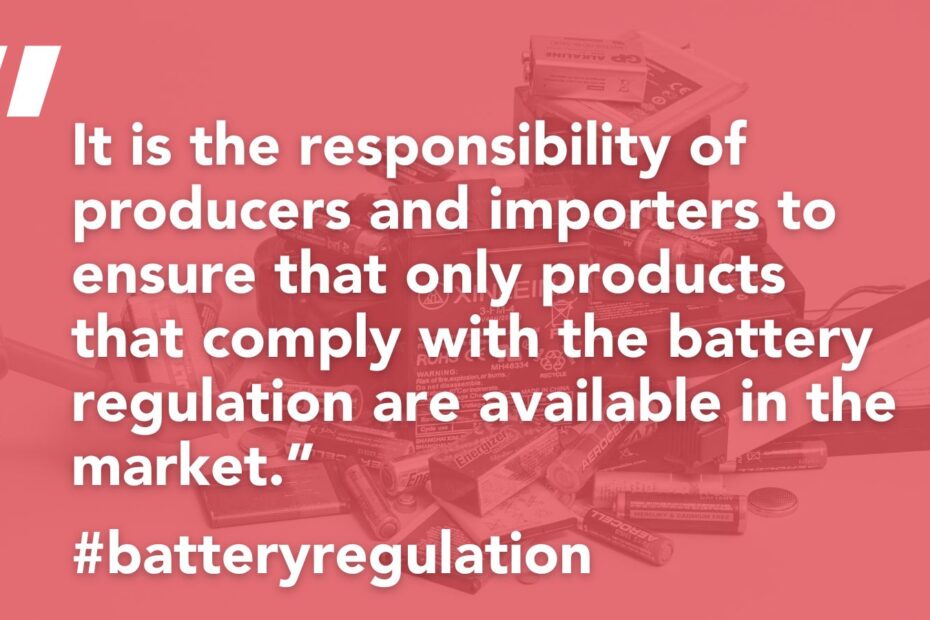What does the EU Battery Regulation require regarding the durability and safety of batteries? And what labeling and information obligations does the regulation set? Answers to these questions were provided in the sixth Battery Regulation webinar.
The European Union’s Battery Regulation came into effect in February 2024. The regulation includes numerous transitional periods, and different requirements will apply after varying timeframes. In the webinar organized by Recser Oy and Akkukierrätys Pb, the focus was on battery safety as well as labeling and information obligations. At its peak, the webinar attracted 264 participants.
Labeling and Information Requirements under the Battery Regulation
Tiia Salamäki, Lead Expert on Chemical Products at Tukes, reviewed the requirements and scope of the Battery Regulation. She focused particularly on substance restrictions in batteries, labeling requirements, and removability and replaceability.
A new restriction for portable batteries, effective from August 18, 2024, is the lead content limit.
According to the Battery Regulation, as of August 18, 2024, batteries placed on the market must bear the CE marking, which is a new requirement for batteries. In addition, they must include, for example, a model identifier and information about the manufacturer and importer. Further labeling requirements are planned, including a QR code, place and date of manufacture, weight, and critical raw materials contained in the battery.
“The Commission’s implementing act, which will clarify battery labeling, is currently being prepared,” Salamäki said.
Portable batteries, as well as batteries for light means of transport, must generally be removable and replaceable by the user. The European Commission is currently preparing a list of products or product groups that are exempt from this requirement.
Salamäki emphasized that economic operators should clearly understand their roles (manufacturer, importer, distributor) and the responsibilities imposed by the Battery Regulation. Companies must also understand their responsibilities if batteries are reused or repurposed. Producer responsibility obligations must also be considered.
Battery Safety Regulations
Seppo Niemi, Lead Expert on Electrical Products at Tukes, presented the EU Declaration of Conformity that battery manufacturers must prepare. Preparing this document requires technical files to demonstrate compliance. An exemplary list can be found in Annex VIII of the Battery Regulation.
“The EU Declaration of Conformity is a standardized and easy-to-prepare document if the process is otherwise well organized,” Niemi noted.
Under the new regulation, specific requirements have been set for testing safety parameters as well as minimum requirements for battery performance and durability.
Article 12 of the Battery Regulation sets safety requirements for batteries used as energy storage. These include overcharge protection, overheat protection, and thermal runaway protection. Niemi noted that while other batteries are not subject to the same safety requirements, dangerous goods transport regulations practically require similar standards to be met for all batteries.
Overall, the greatest safety risk for batteries is fire, but the risk of electric shock and hazards from battery chemicals must also be considered.
Most Common Battery-Related Damages
Antti Määttänen, Claims Director at LähiTapiola Pirkanmaa, presented data on claims related to batteries and charging received between January 2019 and July 2021.
In total, there were approximately 450,000 claims, of which 241 were battery-related. Damages were categorized into five types: swelling, overheating, smoldering, ignition, and external heat sources. In 153 cases, the cause or failure was the battery itself.
The most commonly affected devices were mobile phones and computers. Määttänen presented examples of damage scenarios caused by device charging, battery swelling, self-replacement, and using defective devices.
“If a battery is swollen, the phone should be taken to recycling immediately. A swollen battery poses a fire safety risk,” Määttänen reminded.
Although the number of batteries is enormous, fires caused by them are relatively rare, although increasing. According to Määttänen, lithium battery fires correlate with how many devices Finns order from Chinese online stores.
We recommend taking damaged and swollen batteries primarily to regional collection points, which usually have expertise and the possibility to store batteries outdoors if needed. Hand the battery to staff and inform them of any defects.
Find your nearest collection point: kierrätys.info. More information on handling damaged batteries: zombiakku.fi (in Finnish)
Stay up to date with the progress and content of the Battery Regulation
As the producer organisations, it is important for us to remain up-to-date and share information on how the content of the EU’s Battery Regulation will affect the responsibility of producers of batteries and accumulators in particular.
